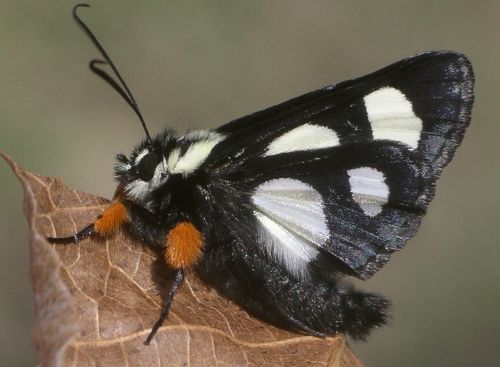by Valerie
April, 2009Eight-spotted Forester
The eight-spotted forester (Alypia octomaculata) has been particularly abundant this spring. A beautiful diurnal (daytime flying) moth in the family Noctuidae, this species feeds at flowers alongside bees and flies. The black and white markings are typical of insects that want to warn predators that they have a bad taste, affording a bit of protection to such conspicuous creatures. Although at a glance it might look like a butterfly, the forester has typical moth features, such as a hairy body and pointed, rather than clubbed, antennae. The larvae of this moth are easy to recognize, as they have distinctive bands of orange, white, and black. They feed on plants in the grape family, including Virginia creeper. This species has just one brood a year and so can only be seen in the spring. |